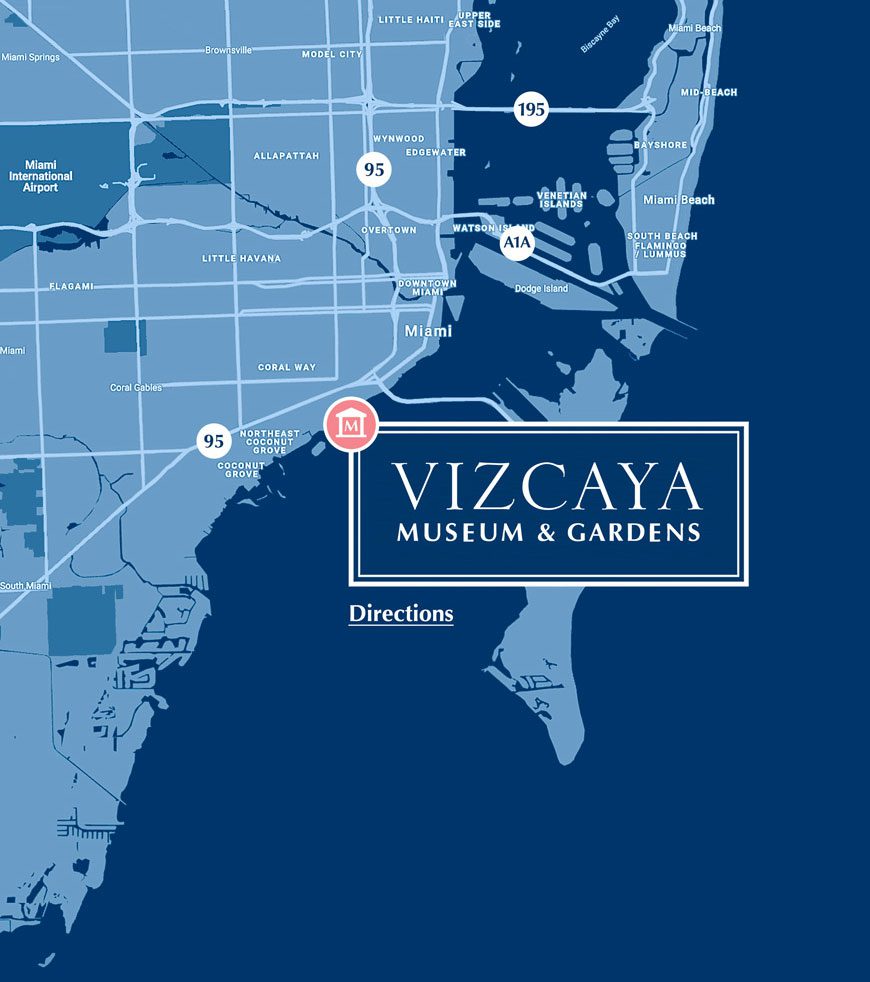The STORIES of Vizcaya
In celebration of Vizcaya’s garden centennial, we want to learn about your favorite memories in the formal gardens. This could be your wedding or engagement, when you brought your mom here for the first time, discovering special animals or plants in gardens, etc. We want to know them all! The Prize One winner will get
Vizcaya is proud to have a long-running relationship with the historic Black Coconut Grove community. To learn more about our neighbors, and about the people who were central to the creation of Vizcaya, starting back in 1916, we partnered with some of Coconut Grove’s pioneer families and community leaders to launch a podcast. The goal
James Deering built Vizcaya as his winter home between 1914 and 1916, a time when America was emerging as an international economic and cultural force. By adapting European design traditions to a Miami context, Deering showed that America could compete with Europe, not only financially, but also culturally. In 1910 Deering hired Paul Chalfin (1874–1959)
William Deering (1826–1913) William Deering founded the Deering Harvester Company, which manufactured agricultural equipment around 1870. This company merged with the McCormick Reaper Company to form International Harvester in 1902, based in Chicago. Deering’s sons, Charles and James, held executive positions at International Harvester. When William Deering’s health weakened, the family began spending time in
Vizcaya has long been synonymous with orchids. These beautiful blooms first arrived on the estate in the 1920s at the behest of James Deering himself. In 2001, a formal orchidarium was established at the estate through the generous endowment from the David A. Klein Foundation. Now Vizcaya’s gardens are preparing to enter a new age
When you walk through Vizcaya’s Main House, you will notice that many of the rooms feature stanchions or barricades that limit where visitors can walk and reach. You may also see signs asking guests not to touch objects or sit on historic furniture. So why can’t you go in there? Like those of other museums,
Recaptured Memories and Modern Reinterpretations Lost Spaces and Stories of Vizcaya was an exhibition that commemorated Vizcaya’s centennial in 2016 by exploring the history of the estate, its original design intent, and daily life at Vizcaya in its early years. Over the past century, nature and time have transformed Vizcaya, and many of its spaces



